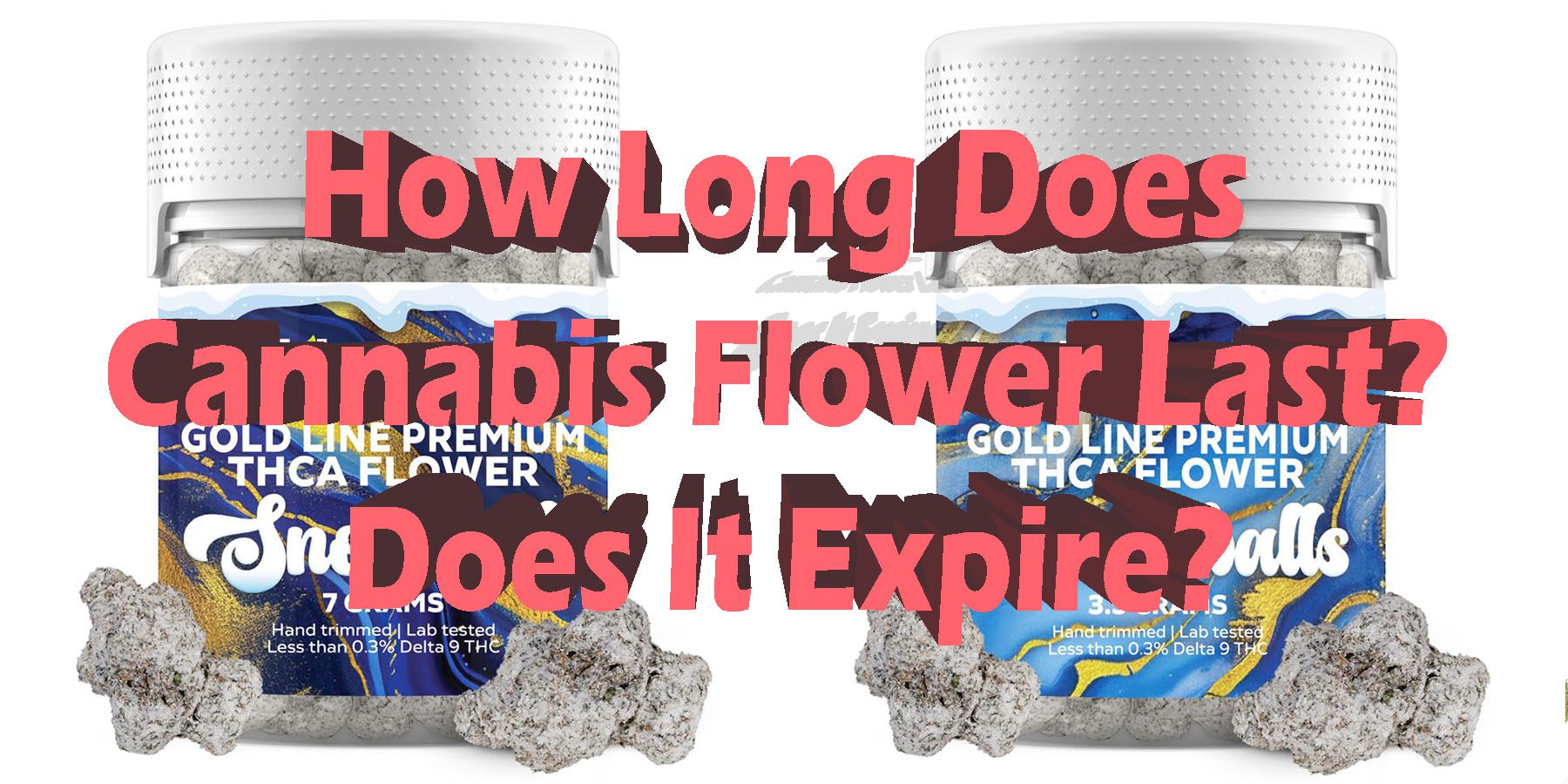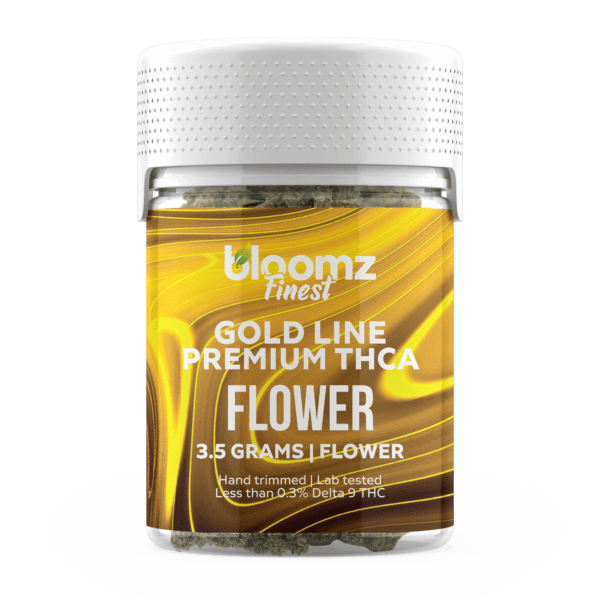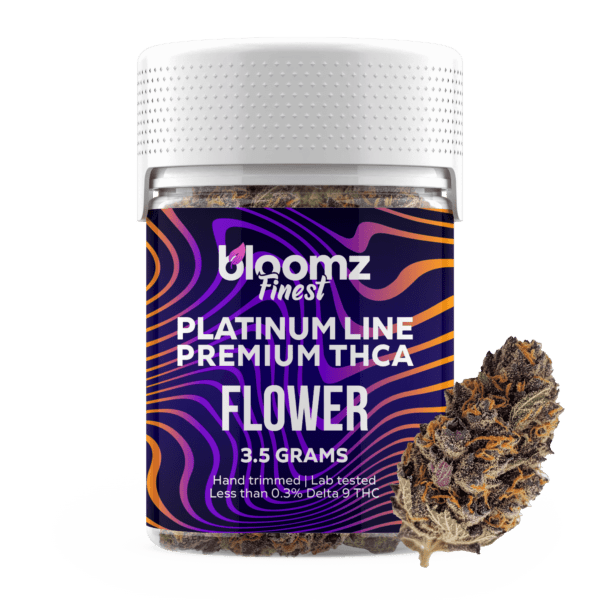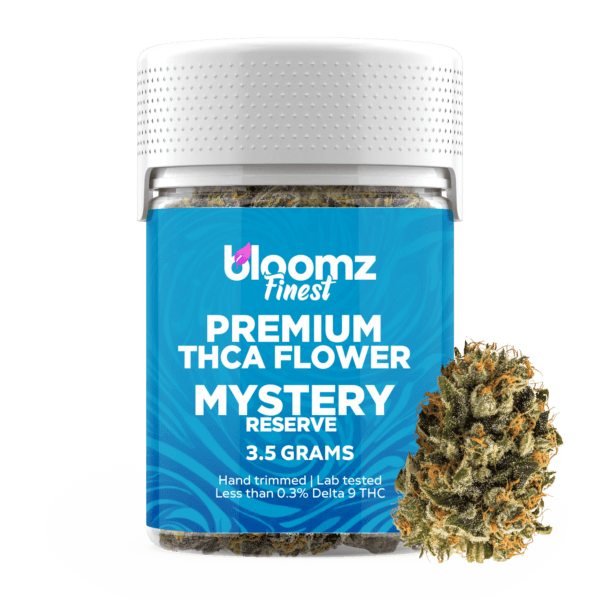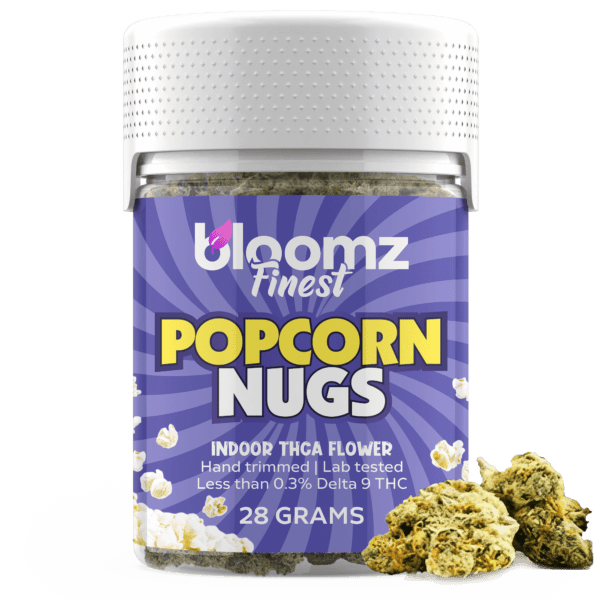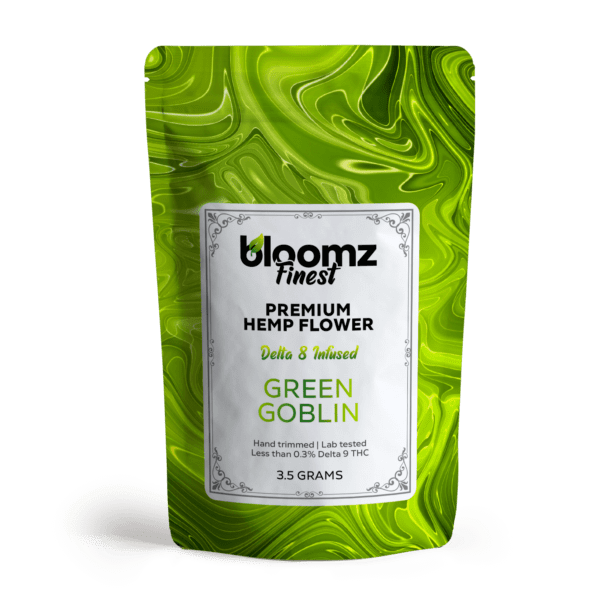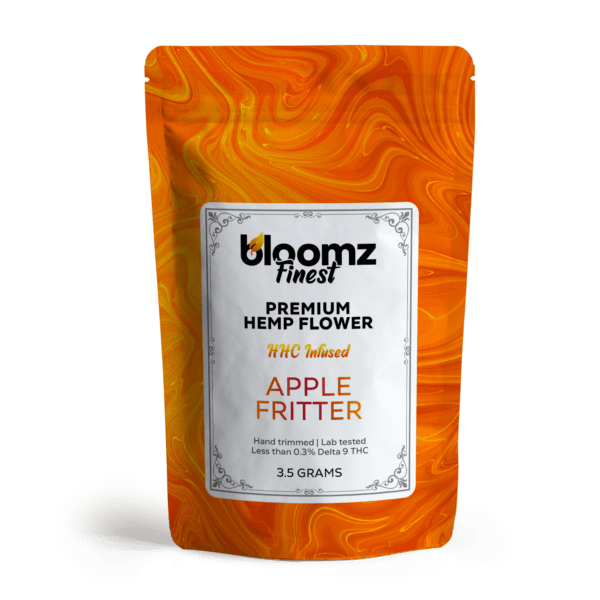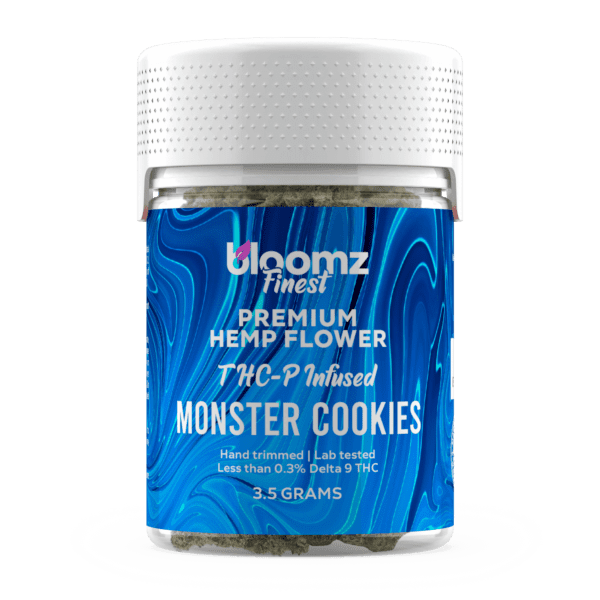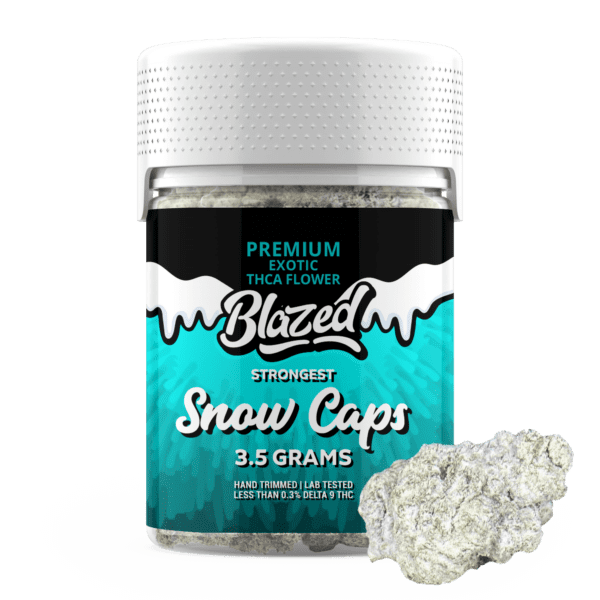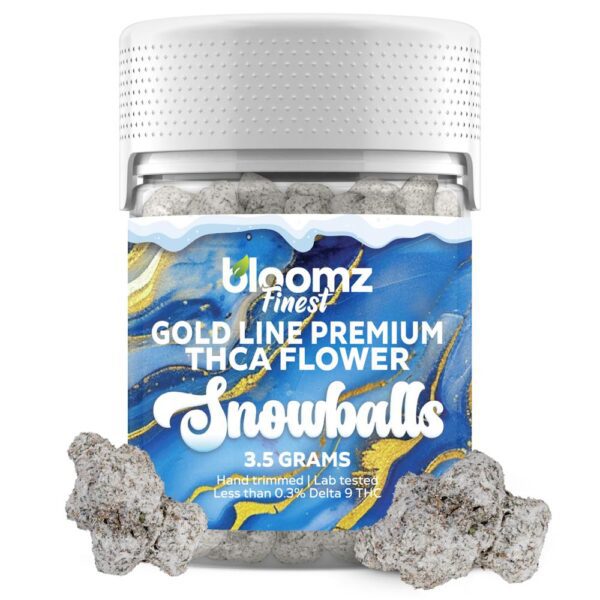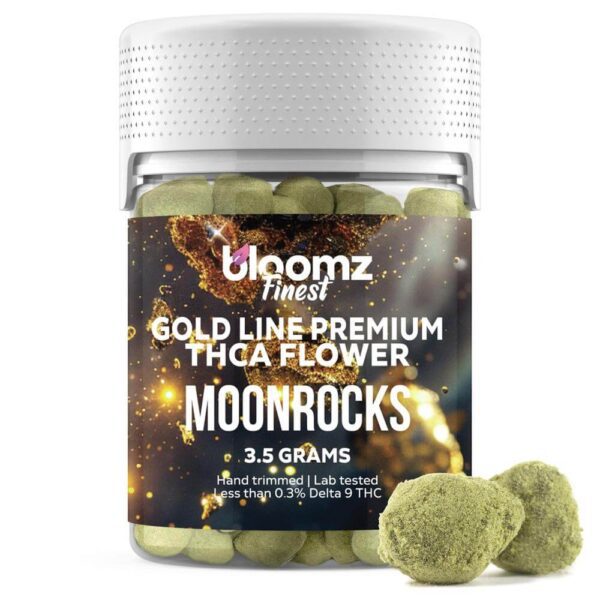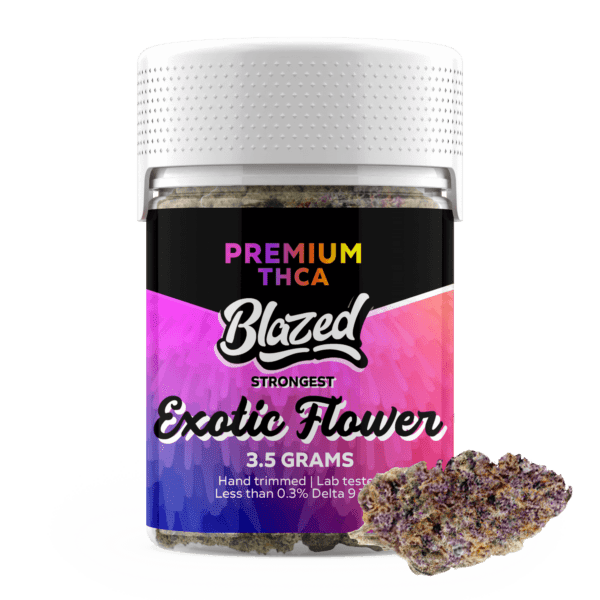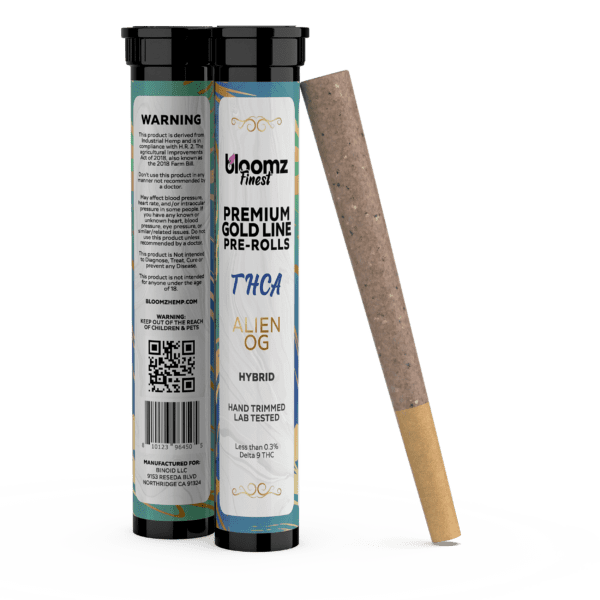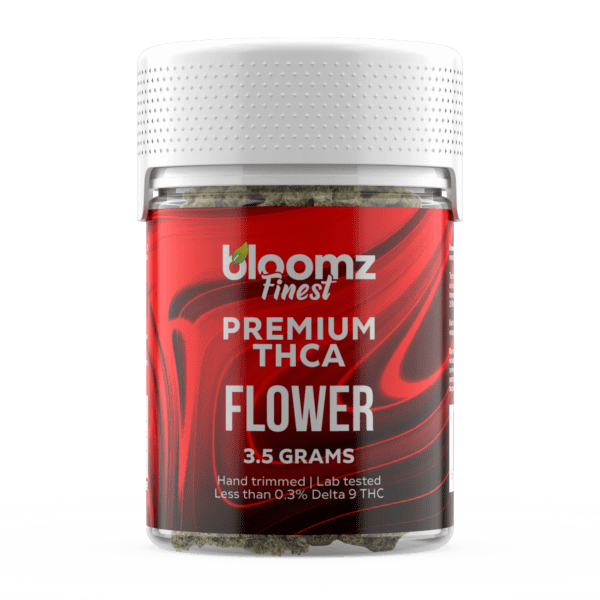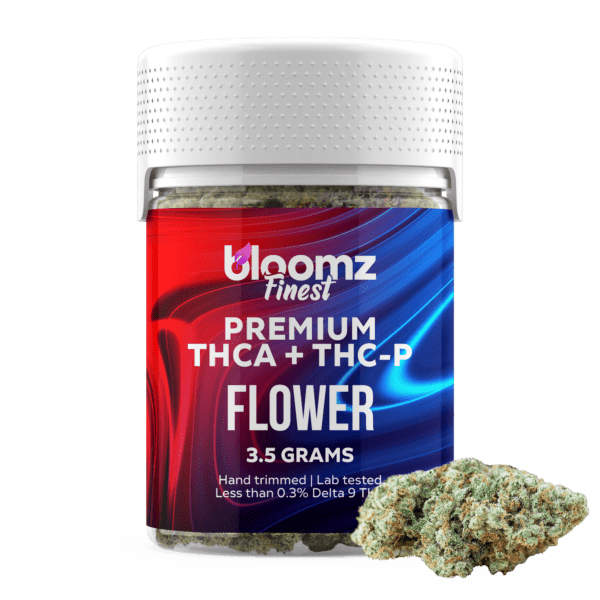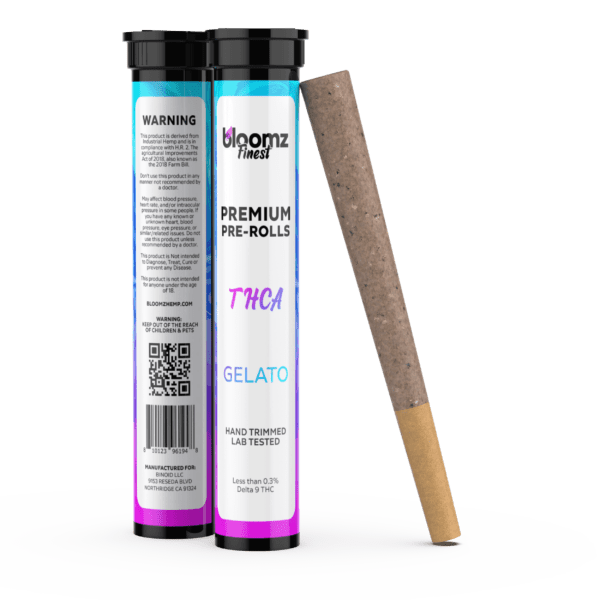There is a unique and quiet reverence in the moment you first open a container of truly exceptional cannabis flower. The senses are immediately engaged by a complex tapestry of aromas—perhaps the sharp tang of citrus, the deep musk of pine, or a sweet, floral bouquet—that promises a singular experience. You admire the architecture of the buds, the vibrant greens and purples dusted with a crystalline frost of trichomes, each one a tiny vault of potential.
In this moment, the flower is at its absolute peak, a perfect snapshot of the cultivator’s craft. But like any precious organic material, that perfection is fleeting. This raises a crucial question for any enthusiast who invests in quality: how do you protect that experience and honor the plant? Understanding the delicate nature of cannabis flower is the first step in learning how to preserve its character, ensuring that the last bud from your stash is just as rewarding as the first.
To Buy Cannabis Flower Click Here
Recommended products
-
THCA Flower – Indoor Exotics – Gold Line
$37.99$69.99 -
THCA Flower – Platinum Line
$49.99$79.99 -
THCA Flower – Mystery Reserve
$41.99$79.99 -
THCA Smalls
$149.99$256.99
The Question of “Expiration” is A Story of Transformation, Not Spoilage
When we think of “expiration”, our minds often jump to spoiled milk or moldy bread—items that become unsafe or wholly unpleasant to consume. Cannabis flower, however, doesn’t expire in this traditional sense. You’re unlikely to find a “best by” date stamped on the side of your jar. Instead, the flower undergoes a slow, graceful, and sometimes not-so-graceful process of degradation. It’s less about spoilage and more about a gradual transformation where the desirable qualities of the plant begin to fade and change, altering the experience it can provide.
This process is a continuum, not an event. A six-month-old bud is different from a one-month-old bud, which is different from one that has aged for over a year. The journey from fresh to faded is a scientific process governed by chemistry and environment. Properly harvested and cured cannabis flower, when stored correctly, can maintain its essential character for a surprisingly long time, often from six months up to a year with minimal loss. Beyond the one-year mark, this degradation process begins to accelerate. After two years, even the best-stored flower will have lost a significant portion of its initial charm.
It’s not that the flower has become inherently “bad” (unless mold is present), but it has certainly become a shadow of its former self, offering a different, often less desirable, experience. This transformation is driven by several key chemical and physical changes. The two most important components at risk are the cannabinoids and the terpenes, the very soul and spirit of the flower.
The Cannabinoid Shift: From Euphoria to Somnolence
Cannabinoids are the primary active compounds in the cannabis plant responsible for its range of effects. The most famous of these is delta-9-tetrahydrocannabinol, or THC, the compound celebrated for producing feelings of euphoria and bliss. Over time, and with exposure to environmental factors like oxygen, heat, and UV light, THC undertakes a chemical journey. Through a process of oxidation, it slowly breaks down and converts into another, lesser-known cannabinoid called cannabinol, or CBN.
This conversion is the single greatest factor in the loss of the flower’s potency as it’s traditionally understood. CBN is a significantly less intoxicating compound than THC. From a molecular standpoint, the stable THC molecule loses hydrogen atoms and forms new double bonds, creating the CBN molecule. This seemingly small alteration has a profound impact on how it interacts with the body’s endocannabinoid system. While research into its specific effects is ongoing, CBN is often anecdotally and clinically associated with a more sleepy and sedating feeling, rather than the bright, uplifting experience fresh, high-THC flower provides.
So, as your cannabis flower ages and its THC converts to CBN, the nature of the experience it offers fundamentally shifts. A bud that was once perfect for a blissful afternoon of creativity might, a year later, be better suited for winding down before bed. The vibrant journey you initially purchased may be replaced by a much more subdued and heavy feeling. An older bud might not deliver the chilled-out relaxation or euphoric spark you were anticipating, instead leading to a more lethargic state that can feel flat and uninspired.
The Terpene Evaporation: The Silencing of Aroma and Flavor
If cannabinoids are the engine of the cannabis experience, terpenes are the steering wheel and the vibrant paint job. These are the volatile aromatic oils that give each cannabis strain its signature scent and flavor profile. They are the source of the delightful citrus, pine, berry, and earthy notes that make each variety unique. Terpenes like limonene (citrus), pinene (pine), and myrcene (herbal, musky) are incredibly delicate, far more so than cannabinoids. As volatile compounds, they are highly susceptible to evaporation and degradation from heat, light, and air exposure.
The loss of terpenes is the most immediately noticeable sign of aging. The once-pungent flower will begin to smell faint, muted, or even like dried hay or old tea leaves. This directly impacts the flavor as well. The complex and enjoyable taste of the smoke or vapor—the very essence of the strain—will be replaced by a flat, harsh, and generic “plant-like” taste. Since terpenes are also believed to work synergistically with cannabinoids in what is known as the “entourage effect”—where the full spectrum of compounds works together to create a more nuanced experience—their loss also contributes to a less rich and less satisfying overall effect. The absence of specific terpenes can subtly yet significantly alter the character of the experience, making it feel less complete.
The Curing Process: Where Preservation Begins
Before any discussion of long-term storage can happen, it’s crucial to understand that the shelf life of your cannabis flower was largely determined weeks or even months before it ever reached your hands. This is because of curing, a critical post-harvest process that is part art, part science. Curing is the slow, controlled process of drying the trimmed cannabis buds to achieve the optimal moisture level and to allow for the maturation of cannabinoids and terpenes.
Immediately after harvest, cannabis plants contain a large amount of excess moisture, as well as starches and sugars. The curing process aims to slowly remove this moisture while breaking down these undesirable compounds. If a plant is dried too quickly, many of the delicate terpenes will evaporate along with the water, and the chlorophyll left in the plant material will result in a harsh, grassy-tasting smoke.
A proper cure involves keeping the buds in a controlled environment, often in airtight jars that are opened periodically (or “burped”) to release moisture and replenish oxygen. This process can take anywhere from two weeks to several months. A slow cure allows for the development of the rich, complex flavor profiles that connoisseurs cherish. It also significantly enhances the stability and shelf life of the cannabis flower.
A poorly cured bud, one that was flash-dried to get to market quickly, will degrade much faster than one that was patiently and expertly cured. It will lose its aroma rapidly and will be more susceptible to becoming overly dry and brittle. When you purchase flower that has a deep, complex aroma and provides a smooth experience, you are enjoying the results of a masterful cure—the first and most important step in preservation.
Recommended products
Identifying the Four Enemies of Freshness
To understand how to store your cannabis flower properly, you must first understand the forces working against it. Four primary environmental factors are constantly seeking to degrade your cannabis, and your storage strategy must be designed to combat them all. Think of these as the four horsemen of the cannabis apocalypse.
Enemy #1: Light (The Photochemical Vandal)
Light, particularly the ultraviolet (UV) spectrum, is arguably the single most destructive element for cannabis flower. While plants need light to grow, harvested and cured flower suffers immensely from its presence. UV rays are a powerful form of electromagnetic radiation that directly accelerates the degradation of organic molecules. When your flower is exposed to direct sunlight, these rays penetrate the plant matter and actively break down the cannabinoids, especially THC. Studies have shown that light exposure is the leading factor in cannabinoid degradation over time, capable of cutting the shelf life of cannabis in half.
This process is a form of photochemical decomposition. The energy from the UV photons excites the molecules in the cannabinoids, causing their chemical bonds to break and reform into new, less desirable compounds like CBN. It is a silent and relentless assault that systematically dismantles the very compounds you seek to enjoy. This is why you will never see a professional dispensary storing their premium flower in clear, transparent bags or containers on a sunny windowsill. Protecting your stash from all light sources, not just direct sunlight, is a non-negotiable rule of proper storage. Even ambient indoor lighting can contribute to this degradation over the long term.
Enemy #2: Air (The Oxidizing Thief)
Oxygen is essential for life, but it is also a primary driver of decay in organic materials. The process of oxidation, which is the same chemical reaction that causes an apple to turn brown or iron to rust, directly contributes to the breakdown of cannabinoids and terpenes. When THC is exposed to oxygen, it hastens its conversion into CBN. The more oxygen your flower is exposed to, the faster its potency will diminish.
This is why the amount of “headspace,” or empty air, in your storage container matters. A large jar that is only a quarter full of flower contains a significant amount of oxygen that will interact with your buds every time you open it. While it’s impossible to eliminate all oxygen, minimizing its presence is key. Storing your cannabis flower in a container that is appropriately sized for the amount you have is a crucial step. Leaving your flower out on a tray or in an unsealed bag is one of the fastest ways to invite the oxidizing thief into your home to rob your flower of its quality. An airtight seal is your greatest weapon.
Enemy #3: Temperature (The Volatility Accelerator)
Temperature plays a crucial role in the preservation of cannabis, and both extremes—hot and cold—present significant problems. Think of temperature control as creating a safe, stable environment where your flower can rest peacefully.
Heat is a major threat because it acts as a catalyst, accelerating the natural aging process. Higher temperatures increase the volatility of delicate terpenes, causing them to evaporate much more quickly and robbing your cannabis flower of its signature aroma and flavor. Heat also speeds up the natural process of decarboxylation, which, over a prolonged period, will lead to the degradation of THC into CBN. Ideally, cannabis should be stored at a cool room temperature, somewhere below 77°F (25°C). Any higher, and you also create a welcoming environment for mold and mildew, especially if humidity is also high. Storing your stash in a hot car, a sun-baked attic, or a cabinet above your oven is a recipe for rapid degradation.
Cold, while seemingly a logical preservation tactic, comes with its own set of significant risks. Many people assume that storing flower in a refrigerator or freezer is like cryogenically preserving its freshness. This is a common and damaging mistake. The primary issue with freezing is its catastrophic effect on the trichomes. These resinous glands that coat the flower are where the majority of cannabinoids and terpenes are stored. When frozen, the water content within the trichomes expands and freezes, making them incredibly brittle and fragile, like tiny icicles.
The slightest agitation or handling of the frozen buds can cause these precious trichomes to snap off and fall away, effectively gutting the cannabis flower of its most valuable components. You might end up with a bag full of potent “kief” at the bottom, but the flower itself will be drastically less potent. Refrigerators, meanwhile, are prone to significant temperature and humidity fluctuations every time the door is opened, making them an unstable and unreliable storage environment that can actually encourage mold growth.
Enemy #4: Humidity (The Moldy Menace)
Humidity is perhaps the most delicate factor to control. It represents a “Goldilocks” scenario where both too much and too little moisture can be disastrous for your flower. The ideal relative humidity (RH) range for storing and curing cannabis flower is between 58% and 62%.
When humidity is too high (above 65% RH), you are rolling out the welcome mat for mold and mildew. Mold spores are ubiquitous in the air, just waiting for a damp, dark environment to call home. Cannabis flower, with its dense structure, provides the perfect breeding ground. Molds like Aspergillus can begin to colonize, appearing as white, gray, or black fuzzy patches. This is the one thing that can truly spoil your cannabis and make it unsafe to consume. Inhaling mold spores can be harmful, making moldy cannabis a complete loss. High humidity can also lead to an ammonia-like smell as anaerobic bacteria begin to break down the plant matter.
When humidity is too low (below 55% RH), the flower will dry out too much. The remaining terpenes will rapidly evaporate, leading to a harsh, hot, and unpleasant smoke or vapor that can be irritating to the throat. The buds themselves will become incredibly brittle and crumbly, turning to dust with the slightest pressure. This excessive dryness also makes the trichomes brittle and prone to breaking off, even at room temperature, reducing the overall potency of the flower. A bud that is too dry provides a lackluster and unsatisfying experience.
How to Tell if Your Flower Has Turned
Before you use your cannabis, especially if it has been stored for a while, it’s wise to perform a quick sensory check. Your eyes, nose, and hands can tell you everything you need to know about the state of your cannabis flower.
The Visual Inspection: Fresh, high-quality flower should be vibrant in color, whether it’s bright green, deep purple, or flecked with orange hairs. As it degrades, these colors will fade and often turn a dull brownish or yellowish hue. Look closely at the trichomes. On fresh flower, they should appear milky white or amber and sparkle like a coating of frost. On old flower, they will look dull and may have degraded. For a truly detailed look, use a jeweler’s loupe or a small pocket microscope. This will allow you to inspect the trichome heads themselves. Healthy trichomes will look like tiny mushrooms with intact, bulbous heads. Degraded trichomes will appear shrunken, broken, or may have lost their heads entirely. The most important visual check is for mold. Look for any unusual white, gray, or black fuzzy spots, cobweb-like filaments, or powdery residue that is distinct from the crystalline trichomes.
The Smell Test: This is often the most revealing test. Fresh cannabis has a powerful and distinct aroma. Even if you don’t know the exact terpene profile, it should smell pleasant and pungent. When you gently squeeze a bud, it should release a wave of fragrance. If your flower has little to no smell, or if it smells like dried hay or old tea, the terpenes have likely evaporated. The biggest red flag is a musty, mildewy, or ammonia-like smell. This is a tell-tale sign of mold, and the flower should be discarded immediately without a second thought.
The Touch and Sound Test: Gently squeeze a bud between your fingers. It should feel slightly spongy and sticky, returning to its shape after being compressed. If it feels wet or overly spongy, the moisture content is too high, and you should be on high alert for mold. If it feels brittle and crumbles into dust at the slightest touch, it is far too dry. You can also try to snap a stem. On a properly cured and stored bud, the stem should make a satisfying “snap” sound. If it bends without breaking, it’s too moist. If it disintegrates into fibers, it’s too dry.
Recommended products
-
THCA Moonrocks – Gold Line
$57.99$89.99 -
Blazed Exotic THCA Flower
$36.99$79.99 -
Exotic THCA Pre-Rolls Gold Line – 3-Pack/6 Pack
$36.99$69.99
The Art of Proper Storage – A Practical Guide to Preservation
Now that you understand the enemies and the signs of degradation, you can implement a proactive storage strategy. The goal is to create a stable environment that neutralizes the four threats: a cool, dark, airtight space with controlled humidity.
A Masterclass in Storage Containers: Your First Line of Defense
The container you use is the cornerstone of your storage system. It is your cannabis flower‘s personal fortress against the outside world. Let’s break this down a bit further here:
The Gold Standard being Airtight Glass Jars: Mason jars or other canning jars with a two-part lid system are the undisputed champions of cannabis storage. Glass is an inert material, meaning it won’t leach any chemicals or affect the flavor of your flower. It is also non-porous and impermeable to oxygen. The airtight seal prevents oxygen from getting in and stops the precious terpenes from escaping. Since most glass is transparent, it’s crucial to store these jars in a dark place to protect the contents from light. For the ultimate protection, you can invest in jars made from Miron violet glass. This specialized, patented glass appears black to the naked eye but is scientifically designed to block the entire spectrum of visible light while allowing beneficial UV-A and infrared light to pass through. This offers superior protection from the most damaging light rays while potentially enhancing preservation.
Other Viable Options: Stainless Steel & Ceramic: High-quality, food-grade stainless steel containers with an airtight seal are another excellent option. They are completely light-proof, durable, and easy to clean. They don’t carry the risk of breakage like glass, making them a good portable option. Similarly, opaque ceramic jars with an airtight lid can also serve as a great storage vessel, offering excellent light protection and a stable environment.
The User’s Note on Pre-Packaged Containers: It is essential to acknowledge that many high-quality cannabis products now come in excellent packaging. If your flower already arrived in a high-quality, airtight glass jar, a stainless steel tin, or a truly vacuum-sealed, light-proof Mylar bag, your work might already be done. There is absolutely no need to transfer it to another container if its current home already meets the criteria of being airtight and light-proof. Simply find a cool, dark spot for it.
What to Avoid at All Costs: Stay away from cheap plastic bags or flimsy pop-top containers for long-term storage. Most plastics are not fully airtight, they can create a static charge that pulls trichomes off the buds, and they offer no physical protection from crushing. You should also avoid using a traditional tobacco humidor. Most of these are made from cedar wood, which contains oils that will leach into your cannabis, permanently altering its flavor and aroma in an undesirable way.
Mastering Humidity with Two-Way Control Packs
Maintaining that perfect 58-62% relative humidity is made incredibly simple with the use of two-way humidity control packs, such as those made by Boveda or Integra Boost. These are not simply moisture absorbers; they are sophisticated micro-environments. Each pack contains a carefully calibrated solution of natural salts and purified water sealed within a vapor-permeable membrane.
The science is elegant: if the environment inside your jar is too dry, the pack releases pure water vapor to raise the humidity to the precise level printed on the pack. If the environment is too humid (perhaps because the flower was slightly under-cured), the pack absorbs the excess moisture. This creates a stable monolayer of water molecules around your flower, protecting the terpenes from evaporation and preventing the bud from becoming either too dry or too moist.
Choosing between the 58% RH and 62% RH packs is a matter of personal preference and climate. If you live in a very humid environment, a 58% pack can help ensure things stay well below the mold threshold. If you live in a very dry climate, a 62% pack can provide a bit more moisture, keeping your flower springy and sticky. Some users simply prefer the slightly denser feel of buds stored at 62%, while others prefer the texture at 58%. It’s a subtle difference, but these packs are the single most effective way to ensure your cannabis flower stays in the perfect humidity zone.
The Great Debate: Rehydrating Overly Dry Flower
What if it’s too late and your cannabis flower has already become brittle and dusty? The internet is full of DIY tips for rehydrating cannabis, such as adding an orange peel, a piece of bread, or a damp paper towel to the container. Do not do this. While these methods will introduce moisture, they are completely uncontrolled and can introduce unwanted oils (from the peel) or, far worse, create a breeding ground for mold.
The only safe way to attempt to rehydrate overly dry cannabis is to use the same tool you use for preservation: a two-way humidity control pack. Place the dry cannabis flower in an airtight glass jar with a 62% RH pack. It will not be an overnight fix. The pack will slowly and gently release moisture, and it may take several days to a week for the flower to return to a more acceptable texture. While you will never be able to reclaim the lost terpenes, you can at least restore some of the flower’s pliability and make the experience of consuming it less harsh.
Advanced Strategy: Long-Term Storage vs. The Active Stash
For those who purchase cannabis flower in larger quantities, one of the best preservation strategies is to separate your collection into a “deep storage” and an “active stash.” Every time you open your main storage jar, you are exposing the entire contents to a fresh influx of oxygen and fluctuating humidity, accelerating degradation.
To avoid this, dedicate one or more large jars as your long-term vault. Pack these jars appropriately (not too tight, but not with excessive empty space), add a humidity pack, seal them, and store them in the best possible location in your home. Then, take out a smaller amount of cannabis flower—enough for a week or so—and place it in a smaller “active stash” jar. This smaller jar is the one you will open daily. By doing this, your main collection remains sealed and stable, protected from the daily environmental exposures, ensuring it stays as fresh as possible for as long as possible.
The Enduring Essence
Ultimately, the act of preserving your cannabis flower is an act of respect—respect for the plant itself, for the meticulous work of the cultivator, and for the quality of your own experience. It is a conscious effort to halt the relentless march of time, even if just for a little while. By transforming a simple drawer or cabinet into a personal vault, you are not merely storing a product; you are safeguarding a future moment of bliss.
You are ensuring that when you choose to revisit that experience, it will be presented with all the integrity, character, and aromatic brilliance it had on the very first day. This careful stewardship bridges the gap between purchase and enjoyment, transforming a perishable good into a well-kept treasure.

